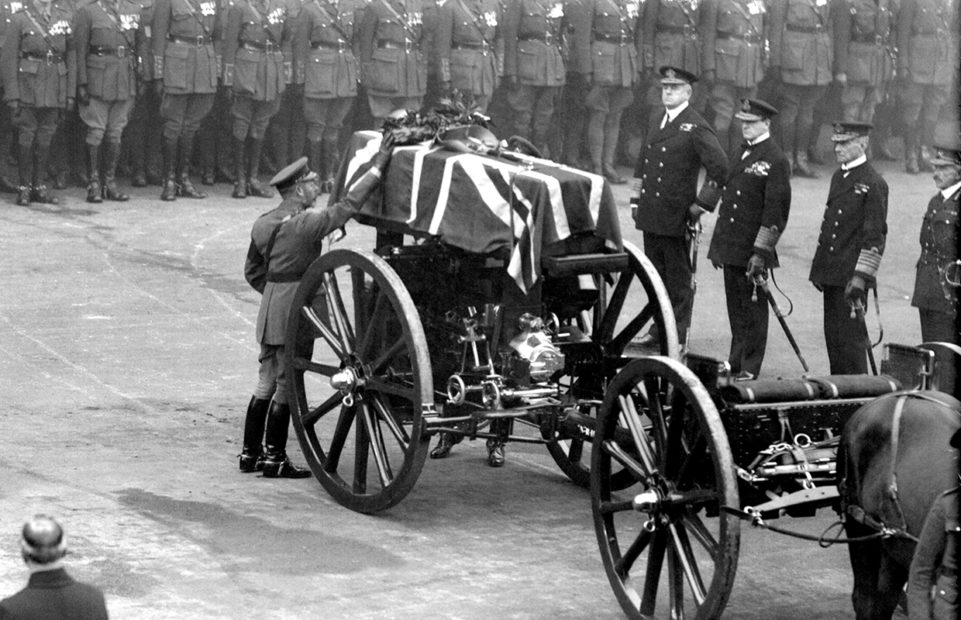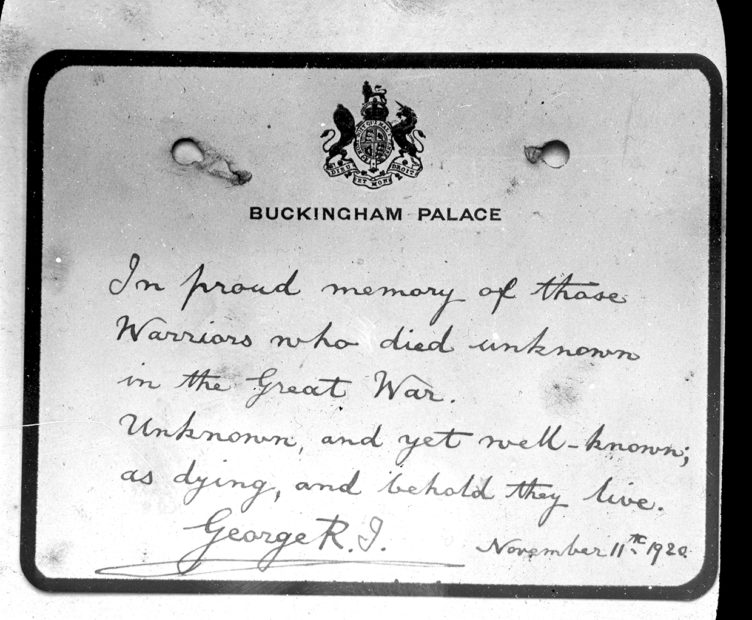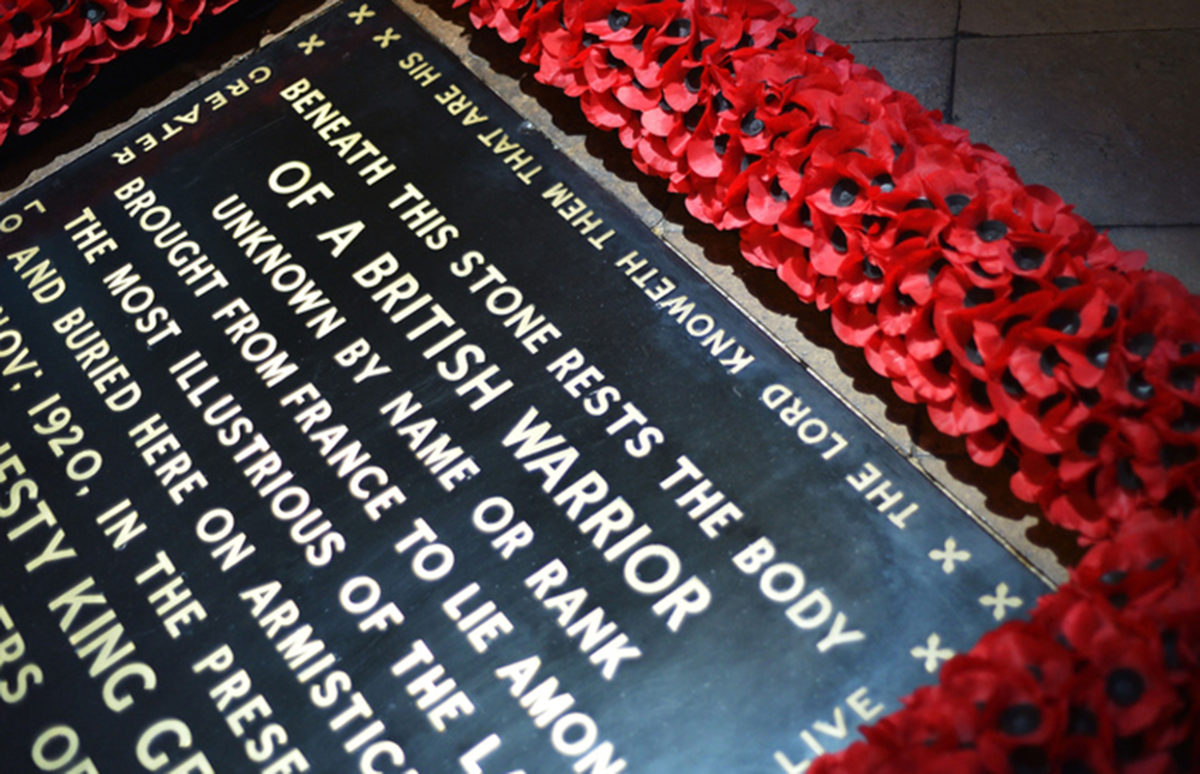The First World War was so devastating, countries were at a loss to know how to commemorate their dead. A hundred years ago, two years after the Armistice, Britain’s King George V inaugurated the Tomb of the Unknown Warrior in Westminster Cathedral, to honour all the anonymous fallen.
Although the war had mobilised vast numbers of the British population, none of the fighting has taken place on British soil. An estimated 800,000 British and colonial troops died and a further 200,000 were presumed missing. Even if families were lucky enough to know that their loved ones had a grave, few could travel to visit them.
Rev David Railton, who had served as a chaplain on the Western Front, suggested the creation of a single tomb, a sort of everyman or every soldier. He got the idea when he happened across a hastily dug grave in someone’s garden in Armentières. It was marked by a piece of wood on which someone had scratched: “An Unknown British Soldier of the Black Watch”.
After a lot of lobbying, he won Prime Minister David Lloyd George over to the idea, and it was decided that the “unknown warrior” would be buried in Westminster Abbey, an honour usually reserved for royalty and highly respected citizens.
To make sure that the warrior was truly anonymous, bodies were exhumed from several war cemeteries in France and Belgium and Brigadier General Louis John Wyatt chose one corpse to symbolise all the fallen.

The unknown warrior was transported to England in a British warship. On the second anniversary of the Armistice, 11 November 1920, it was received at the newly built Cenotaph war memorial by King George V, who accompanied it to the Abbey. The grave was filled with earth from French battlefields, and the marble used to make the tombstone was from Belgium.
The ceremony was attended by 1000 women who had lost husbands or sons to the war. In the week that followed the ceremony, around 1,250,000 people are believed to have visited the site.

The Centenary Ceremony
On 11 November 2020, a socially distanced ceremony took place to mark the centenary of the tomb of the Unknown Warrior. George V’s grandson, Prince Charles, was present to honour the warrior once again.
Poet Laureate Simon Armitage had written a poem to honour the occasion. “The Bed”, likens the warrior’s final resting place to a bed and concludes:
“All this for a soul
without name or rank or age or home, because you
are the son we lost, and your rest is ours.”
You can read the whole poem here.
Commemoration in Song
English folk singer-songwriter Ralph McTell, best known for “Streets of London”, felt moved to write about the unknown soldier for the centenary. To highlight that the soldier could have come from any of the four home nations, he roped in Sir Anthony Hopkins, Liam Neeson and Billy Connolly to use their voices to represent soldiers from Wales, Northern Ireland and Scotland.
It ends, “And wrapped beneath dark angels folded wings, Tommy Atkins rests with Kings,” honouring the generic British soldier or “Tommy”.
Copyright(s) :
Westminster Abbey
> They Shall Not Grow Old Film: Bringing WWI to Life
> Remembering British WWI Soldiers
> In the Trenches
Tag(s) : "11 November" "commemoration" "conflict" "November" "poem" "poppies" "Prince Charles" "Ralph McTell" "remembrance" "Shine bright 1e" "Simon Armitage" "song" "Speakeasy Files 3e" "war" "Western Front" "World War I" "world war one" "WWI"






